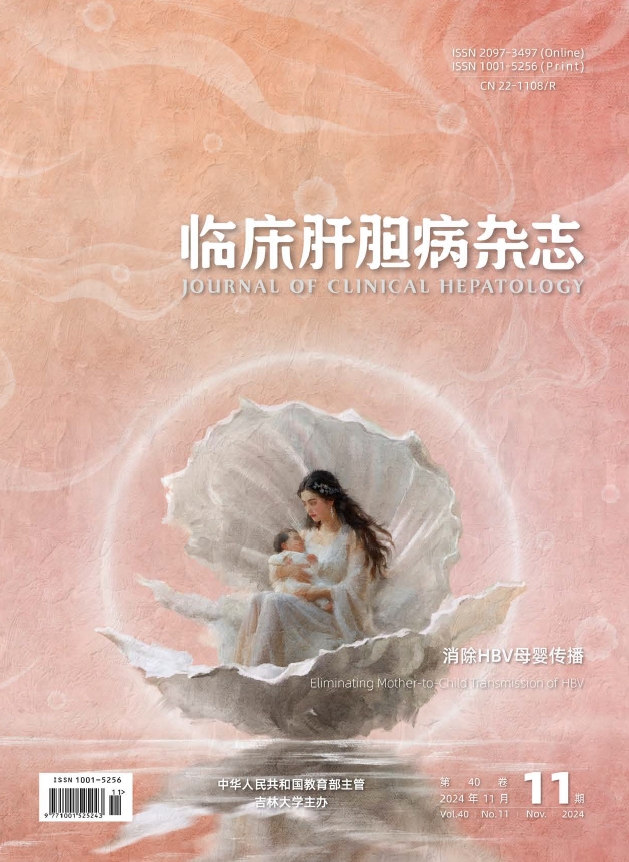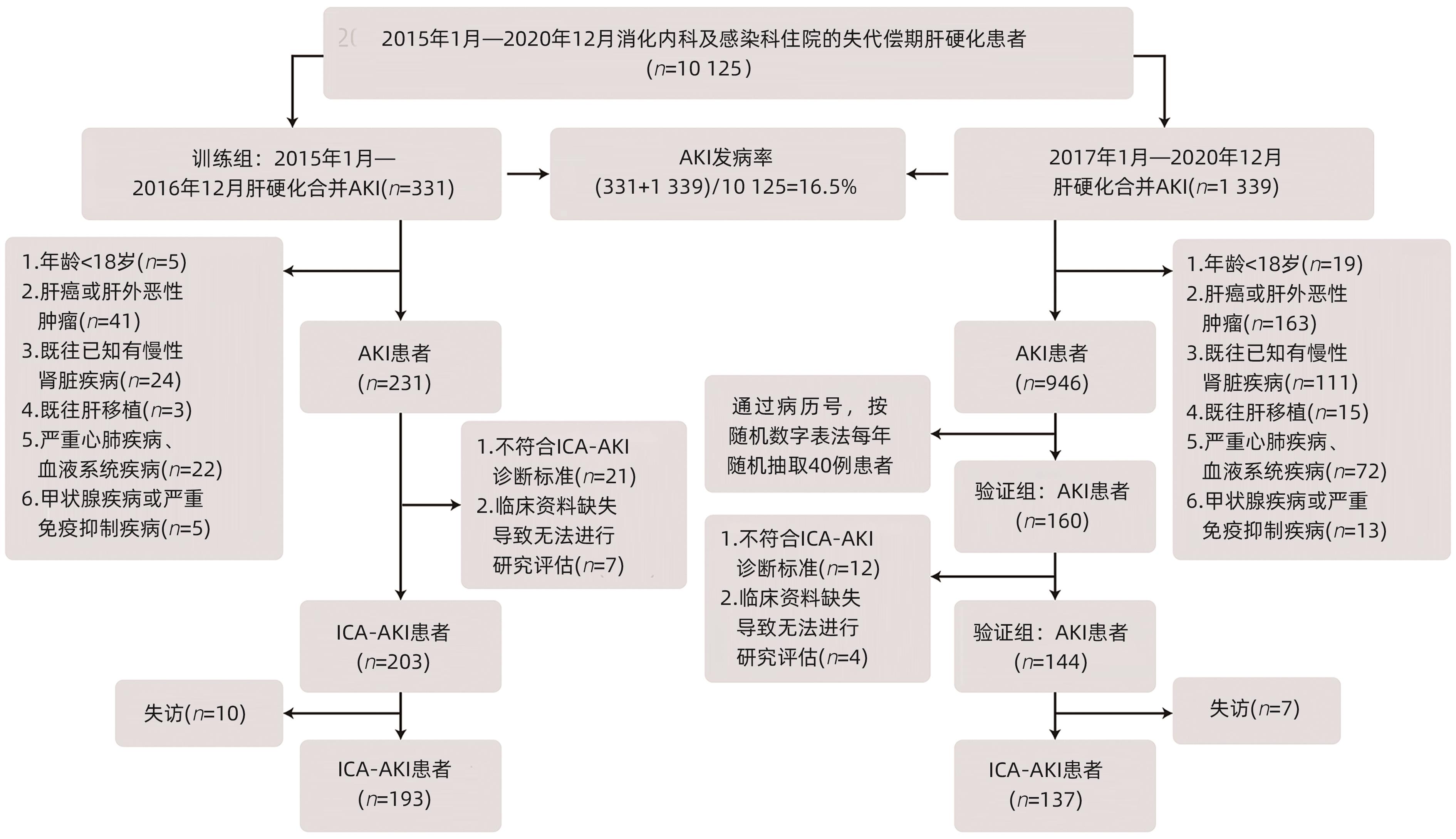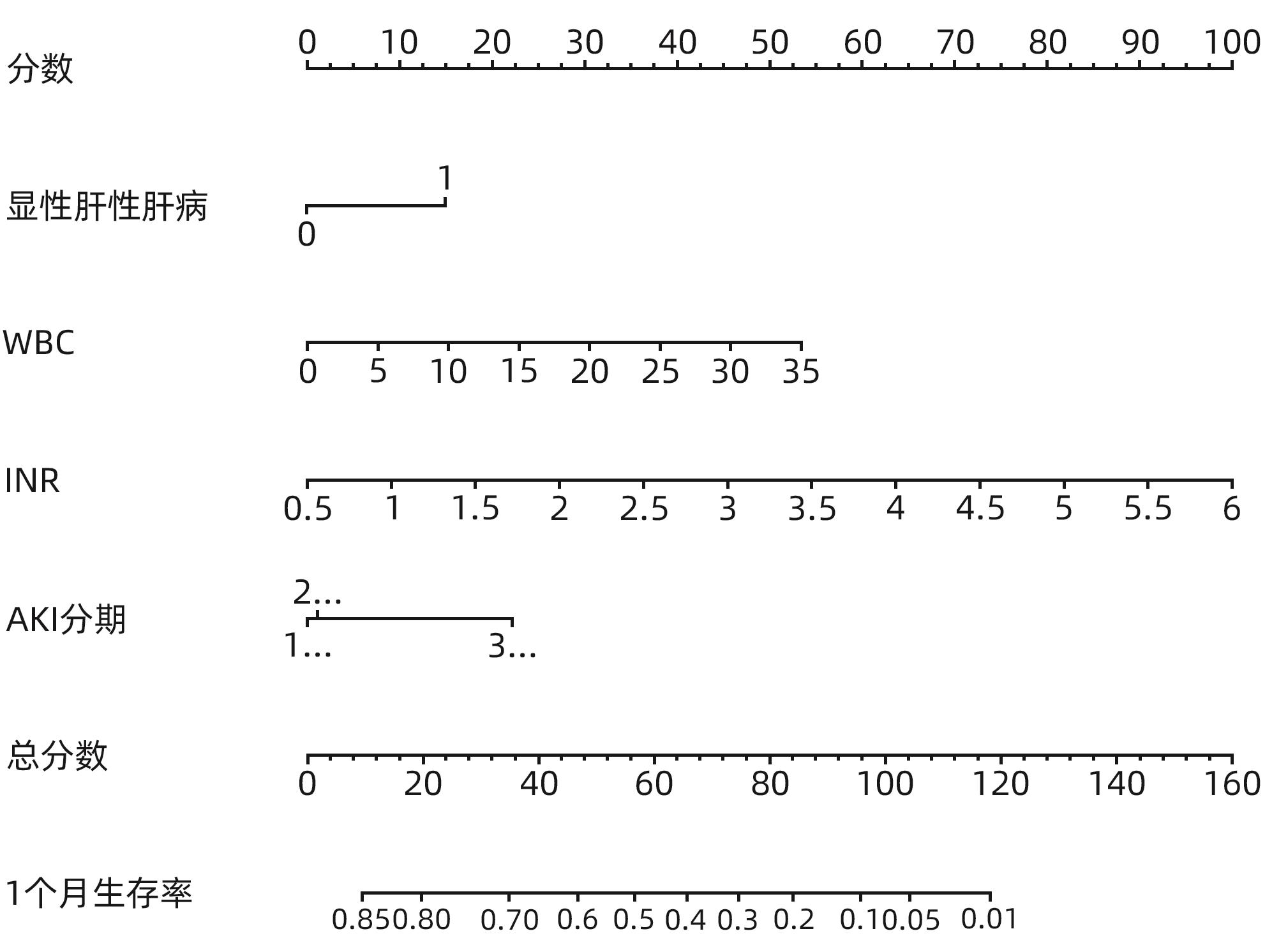| [1] |
European Association for the Study of the Liver. EASL Clinical Practice Guidelines for the management of patients with decompensated cirrhosis[J]. J Hepatol, 2018, 69( 2): 406- 460. DOI: 10.1016/j.jhep.2018.03.024. |
| [2] |
GUPTA K, BHURWAL A, LAW C, et al. Acute kidney injury and hepatorenal syndrome in cirrhosis[J]. World J Gastroenterol, 2021, 27( 26): 3984- 4003. DOI: 10.3748/wjg.v27.i26.3984. |
| [3] |
NADIM MK, GARCIA-TSAO G. Acute kidney injury in patients with cirrhosis[J]. N Engl J Med, 2023, 388( 8): 733- 745. DOI: 10.1056/NEJMra2215289. |
| [4] |
PATIDAR KR, BELCHER JM, REGNER KR, et al. Incidence and outcomes of acute kidney injury including hepatorenal syndrome in hospitalized patients with cirrhosis in the US[J]. J Hepatol, 2023, 79( 6): 1408- 1417. DOI: 10.1016/j.jhep.2023.07.010. |
| [5] |
TARIQ R, HADI Y, CHAHAL K, et al. Incidence, mortality and predictors of acute kidney injury in patients with cirrhosis: A systematic review and meta-analysis[J]. J Clin Transl Hepatol, 2020, 8( 2): 135- 142. DOI: 10.14218/JCTH.2019.00060. |
| [6] |
BELCHER JM, GARCIA-TSAO G, SANYAL AJ, et al. Association of AKI with mortality and complications in hospitalized patients with cirrhosis[J]. Hepatology, 2013, 57( 2): 753- 762. DOI: 10.1002/hep.25735. |
| [7] |
WONG F, BOYER TD, SANYAL AJ, et al. Reduction in acute kidney injury stage predicts survival in patients with type-1 hepatorenal syndrome[J]. Nephrol Dial Transplant, 2020, 35( 9): 1554- 1561. DOI: 10.1093/ndt/gfz048. |
| [8] |
ANGELI P, GINÈS P, WONG F, et al. Diagnosis and management of acute kidney injury in patients with cirrhosis: Revised consensus recommendations of the International Club of Ascites[J]. J Hepatol, 2015, 62( 4): 968- 974. DOI: 10.1016/j.jhep.2014.12.029. |
| [9] |
SARIN SK, KUMAR A, ANGUS PW, et al. Diagnosis and management of acute variceal bleeding: Asian Pacific Association for Study of the Liver recommendations[J]. Hepatol Int, 2011, 5( 2): 607- 624. DOI: 10.1007/s12072-010-9236-9. |
| [10] |
European Association for the Study of the Liver. EASL clinical practice guidelines on the management of ascites, spontaneous bacterial peritonitis, and hepatorenal syndrome in cirrhosis[J]. J Hepatol, 2010, 53( 3): 397- 417. DOI: 10.1016/j.jhep.2010.05.004. |
| [11] |
FERENCI P, LOCKWOOD A, MULLEN K, et al. Hepatic encephalopathy: Definition, nomenclature, diagnosis, and quantification: Final report of the working party at the 11th World Congresses of Gastroenterology, Vienna, 1998[J]. Hepatology, 2002, 35( 3): 716- 721. DOI: 10.1053/jhep.2002.31250. |
| [12] |
ROSE CF, AMODIO P, BAJAJ JS, et al. Hepatic encephalopathy: Novel insights into classification, pathophysiology and therapy[J]. J Hepatol, 2020, 73( 6): 1526- 1547. DOI: 10.1016/j.jhep.2020.07.013. |
| [13] |
SARIN SK, CHOUDHURY A, SHARMA MK, et al. Acute-on-chronic liver failure: Consensus recommendations of the Asian Pacific association for the study of the liver(APASL): An update[J]. Hepatol Int, 2019, 13( 4): 353- 390. DOI: 10.1007/s12072-019-09946-3. |
| [14] |
PUGH RN, MURRAY-LYON IM, DAWSON JL, et al. Transection of the oesophagus for bleeding oesophageal varices[J]. Br J Surg, 1973, 60( 8): 646- 649. DOI: 10.1002/bjs.1800600817. |
| [15] |
BOTTA F, GIANNINI E, ROMAGNOLI P, et al. MELD scoring system is useful for predicting prognosis in patients with liver cirrhosis and is correlated with residual liver function: A European study[J]. Gut, 2003, 52( 1): 134- 139. DOI: 10.1136/gut.52.1.134. |
| [16] |
WIESNER R, EDWARDS E, FREEMAN R, et al. Model for end-stage liver disease(MELD) and allocation of donor livers[J]. Gastroenterology, 2003, 124( 1): 91- 96. DOI: 10.1053/gast.2003.50016. |
| [17] |
DESAI AP, KNAPP SM, ORMAN ES, et al. Changing epidemiology and outcomes of acute kidney injury in hospitalized patients with cirrhosis-a US population-based study[J]. J Hepatol, 2020, 73( 5): 1092- 1099. DOI: 10.1016/j.jhep.2020.04.043. |
| [18] |
ARORA MS, KAUSHIK R, AHMAD S, et al. Profile of acute kidney injury in patients with decompensated cirrhosis at a tertiary-care center in uttarakhand, India[J]. Dig Dis, 2020, 38( 4): 335- 343. DOI: 10.1159/000504836. |
| [19] |
MICHELENA J, ALTAMIRANO J, ABRALDES JG, et al. Systemic inflammatory response and serum lipopolysaccharide levels predict multiple organ failure and death in alcoholic hepatitis[J]. Hepatology, 2015, 62( 3): 762- 772. DOI: 10.1002/hep.27779. |
| [20] |
TANDON P, JAMES MT, ABRALDES JG, et al. Relevance of new definitions to incidence and prognosis of acute kidney injury in hospitalized patients with cirrhosis: A retrospective population-based cohort study[J]. PLoS One, 2016, 11( 8): e0160394. DOI: 10.1371/journal.pone.0160394. |
| [21] |
WAN YP, WANG AJ, ZHANG W, et al. Development and validation of a nomogram for predicting overall survival in cirrhotic patients with acute kidney injury[J]. World J Gastroenterol, 2022, 28( 30): 4133- 4151. DOI: 10.3748/wjg.v28.i30.4133. |
| [22] |
SCHACHER FC, MATTOS AA, MULAZZANI CM, et al. Impact of acute kidney injury staging on prognosis of patients with cirrhosis[J]. Arq Gastroenterol, 2020, 57( 3): 244- 248. DOI: 10.1590/S0004-2803.202000000-46. |
| [23] |
DUAH A, DUAH F, AMPOFO-BOOBI D, et al. Acute kidney injury in patients with liver cirrhosis: Prevalence, predictors, and In-hospital mortality at a district hospital in Ghana[J]. Biomed Res Int, 2022, 2022: 4589767. DOI: 10.1155/2022/4589767. |
| [24] |
PATIDAR KR, CULLARO G, NAVED MA, et al. Prognostic significance of acute kidney injury stage 1B in hospitalized patients with cirrhosis: A US nationwide study[J]. Liver Transpl, 2024, 30( 3): 244- 253. DOI: 10.1097/LVT.0000000000000241. |
| [25] |
PIANO S, ROSI S, MARESIO G, et al. Evaluation of the Acute Kidney Injury Network criteria in hospitalized patients with cirrhosis and ascites[J]. J Hepatol, 2013, 59( 3): 482- 489. DOI: 10.1016/j.jhep.2013.03.039. |
| [26] |
MAIWALL R, SARIN SK, KUMAR S, et al. Development of predisposition, injury, response, organ failure model for predicting acute kidney injury in acute on chronic liver failure[J]. Liver Int, 2017, 37( 10): 1497- 1507. DOI: 10.1111/liv.13443. |
| [27] |
GOMES CGO, De ANDRADE MVM, RESENDE GUEDES L, et al. Clinical aspects and prognosis evaluation of cirrhotic patients hospitalized with acute kidney injury[J]. Can J Gastroenterol Hepatol, 2019, 2019: 6567850. DOI: 10.1155/2019/6567850. |
| [28] |
SCOTT RA, AUSTIN AS, KOLHE NV, et al. Acute kidney injury is independently associated with death in patients with cirrhosis[J]. Frontline Gastroenterol, 2013, 4( 3): 191- 197. DOI: 10.1136/flgastro-2012-100291. |
| [29] |
MOGA L, ROBIC MA, BLASCO-PERRIN H, et al. Acute kidney injury in patients with cirrhosis: Prospective longitudinal study in 405 patients[J]. Clin Res Hepatol Gastroenterol, 2022, 46( 4): 101822. DOI: 10.1016/j.clinre.2021.101822. |
| [30] |
ALESSANDRIA C, OZDOGAN O, GUEVARA M, et al. MELD score and clinical type predict prognosis in hepatorenal syndrome: Relevance to liver transplantation[J]. Hepatology, 2005, 41( 6): 1282- 1289. DOI: 10.1002/hep.20687. |
| [31] |
BIGGINS SW, ANGELI P, GARCIA-TSAO G, et al. Diagnosis, evaluation, and management of ascites, spontaneous bacterial peritonitis and hepatorenal syndrome: 2021 practice guidance by the American association for the study of liver diseases[J]. Hepatology, 2021, 74( 2): 1014- 1048. DOI: 10.1002/hep.31884. |
| [32] |
FLAMM SL, WONG F, AHN J, et al. AGA clinical practice update on the evaluation and management of acute kidney injury in patients with cirrhosis: Expert review[J]. Clin Gastroenterol Hepatol, 2022, 20( 12): 2707- 2716. DOI: 10.1016/j.cgh.2022.08.033. |








 DownLoad:
DownLoad:
